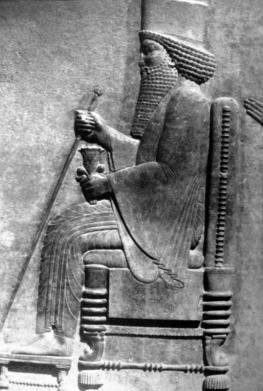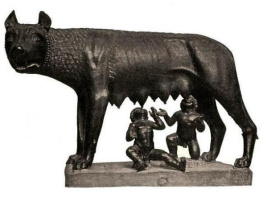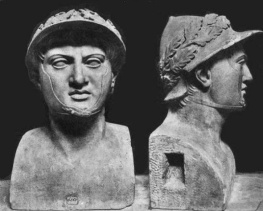This edition first published in hardcover in the United States and the United Kingdom in 2011 by Overlook Duckworth, Peter Mayer Publishers, Inc.
NEW YORK:
Overlook
141 Wooster Street
New York, NY 10012
www.overlookpress.com
For bulk and special sales, please contact sales@overlookny.com
LONDON:
Duckworth
90-93 Cowcross Street
London EC1M 6BF
www.ducknet.co.uk
info@duckworth-publishers.co.uk
Revised and updated from Haiti: The Duvaliers and Their Legacy by
Elizabeth Abbott, first published in 1988 by McGraw-Hill
Copyright 1988 and 2011 by Elizabeth Abbott
All rights reserved. No part of this publication may be reproduced or transmitted in any form or by any means, electronic or mechanical, including photocopy, recording, or any information storage and retrieval system now known or to be invented, without permission in writing from the publisher, except by a reviewer who wishes to quote brief passages in connection with a review written for inclusion in a magazine, newspaper, or broadcast.
ISBN 978-1-59020-989-9
A History of Celibacy
A History of Mistresses
A History of Marriage
Sugar: A Bittersweet History
To my sister Louise Abbott, with affection and gratitude
T HE DAY THE EARTH BENEATH IT CRACKED OPEN , H AITI staggered once more onto the world stage. Briefly, the world wept. Then, people rushed to rescue and repair, to feed and shelter, to restore to livability if not normalcy the battered victims of this battered nation.
And to donate, and to fundraise: individuals and governments pledged millions of dollars in relief money. As the author of Haiti: The Duvaliers and their Legacy (as the first edition of this book was called) and the magazine article, Haiti: Where Rivers Run Brown, I was in sudden demand for media interviews and as a guest-speaker at Haiti fundraisers in Canada. The initial focus was simple: What had happened, and why? What could prevent its recurrence? How, besides check-writing, could concerned foreigners help?
Quickly, though, the criticizing began: Why was the relief effort so glacially slow? Where were Haitis president and government? Where was all the pledged aid money? How could it be wealthy Haitians shopped in intact Ptionville shops that displayed Gucci handbags while, meters away, tens of thousands of their compatriots sweltered under flimsy tents and queued daily for biscuits and bottled water? Who (if anybody) was running the country: its (seemingly invisible) government? the (all-too-visible and vocal) Americans and other foreigners? Would the president-in-exile return home to minister to his once-adoring people? What in Haitis history contributed to its leaderships paralysis?
Haitis tormented past haunts and shapes its present and so publishers scrambled to acquire books about Haitis history, mine among them. At first I was reluctant. Id already said what I wanted to when I wrote Haiti.
But searing images from my life in Haiti and afterward reminded me of what still needs to be said. And the deadliness of the earthquake and the relentless horror of its aftermath were rooted in what I knew well: deforestation, with its concomitants of rural depopulation and urban overpopulation and overbuilding; inadequate resources and neglectful and dishonest officials, permitting shoddy construction standards; a culture of corruption and greed that rotted Haiti from within and shamefully permitted cynical foreigners to share the booty; an uncaring and inbred elite that shuns its civic responsibilities, and pursues instead immediate financial gains and social aggrandizement; foreign governments whose manipulative policies toward Haiti twist it like a marionette; and an international network of often-competing NGOs whose raisons dtre are catastrophes such as Haitis earthquake.
First, here is how I came to write this book. In the 1980s I was the wife of Haitian hotelier Joseph Namphy, and the sister-in-law of Lieutenant General Henri Namphy, who headed Haitis interim government after Jean-Claude Duvalier fled to France in February of 1986. Those relationships, and my job reporting for Reuters News Service, provided me with unique opportunities in researching my book, opening doors and allowing me glimpses into the private workings of Haitian government. The bulk of my research, however, consisted of interviewing hundreds of people and of ferreting out written materials, not so easy in Haitis woefully undersupplied libraries and without the not-yet-invented Internet.
When I conceived this book, the Duvalier regime was tottering to an end, and Henri Namphy was a little-known military figurehead. Although he (briefly!) became a national hero in taking over from Duvalier, I assumed, as did most people, that his tenure would be short and transitional, and that a democratically elected president would soon succeed him. I never imagined that two years later his government would preside over Bloody Sunday, when Tonton Macoutes massacred thirty-four citizens trying to vote in elections then widely believed to be the last chance for democracy.
I wrote Haiti for non-Haitians, to try to convey through the perspectives of Haitians what Duvalierism was and what legacy it left in that suffering nation just seven hundred miles off the coast of Florida. My decades as a professional historian in Canada and two years as a journalist in Haiti shaped my work, not my relationship with a brother-in-law suddenly infamous as a brutal dictator. In the chapters dealing with him, I wrestled with the temptation to overstate the case and prove my impartiality by painting Namphy as a monster. In fact, the evidence points to an impulsive man overwhelmed by the Duvalier legacy and by the pressures of the Haitian presidency, who metamorphosed into the tyrant who was complicit in the Bloody Sunday massacre. The man who swore the oath of office on February 6, 1986, was not capable of saying, as he did two years later, Haiti has only one voter. The army. Ha ha.
Henri Namphy was not always so cynical. Days after Duvaliers departure, when Reuters offered me the job of Haiti stringer, I discussed it with Henri. He reflected briefly and said, Haiti needs a responsible free press. Take the job. I know youll be objective and fair.
And, as the military governments policies increasingly alienated the people, I reported it. Once a very high-ranking Haitian official accused me of having caused the U.S. to postpone $3 million in military aid to Haiti because of a story I had written for TheNew York Times, about the army using live ammunition on demonstrators at Fort Dimanche. I was in the crowd and witnessed what I reported. I was told that Henri reproached the official brusquely. But by the time of Bloody Sunday, I doubt that he cared what I wrote, or who read it. Henri Namphy had become a desperate man I scarcely recognized.
At the same time, as military hostility escalated against Lavalas (the cleansing flood), the swelling popular movement that set in motion Duvaliers ouster, and against Haitian journalists who reported it, identification as Namphys sister-in-law could have cost me my life. But no Haitian journalist exposed me; I was always treated with collegiality. Several went further, protecting me from bullets, tear gas and from panic-stricken crowds in the frantic stampedes from danger known in Haiti as couris.
These couris, still very much a part of Haitian life, are part of what led to this new edition of my book. The others? Here are some of the images that reveal so many truths about Haiti. Some are unambiguous. Others, riddle-like, will make sense in the context of later chapters.














